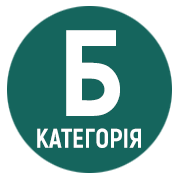FAIR GAMES AND ENTERTAINMENT OF NORTHERN POLESIA (SECOND HALF OF THE XIX – EARLY OF THE XX CENTURIES)
Abstract
The article shows the organization of leisure activities of participants of fairs on the territory of the Northern (Belarusian) Polesia in the late XIX – early XX centuries. A fair is a traditional festively furnished extended trade that took place periodically in a certain area. The article shows the main geographical centers of the largest fairs in the region, shows their specialization. The largest fairs were held in Zelva, Svislač, Niasviž, Homiel, Mazyr, significant fair centers were Brest, Kobryn, Pinsk, etc. In addition to items of local industry and agriculture, many goods from neighboring regions and from abroad were delivered to Polesian fairs. During the period under review, the trip to the fair was not only of purely practical importance for the inhabitants of Polesia. A wide wholesale and retail trade unfolded in the squares, which were accompanied by colorful folk gulyanya, games and fun, performances of arotists, which turned this event into a colorful holiday. The fair is considered not only as a form of organization of trade in goods, the relationship between the seller and the buyer, but also as a specific form of social communication, socio-cultural interaction, organization of leisure and fun free time. The place of the fair and the time associated with it in folk folklore are shown, memories of eyewitnesses and participants are given, essays about the Polesian fairs by famous historians and ethnographers, such as P. Shejn, A. Kirkor, P. Szpilewski, etc. are given. Games and entertainment that existed during fairs are considered. The characteristic folklore elements (songs, sayings, etc.) are shown, showing the great importance of fair games in the system of social communications of the inhabitants of Polesia more than a century ago. Special attention is paid to the leisure of young people, the importance of fairs in the system of establishing marriage and premarital relations of young people is shown.
References
2. Гісторыя Беларусі: У 6 т. Т. 4. Беларусь у складзе Расійскай імперыі (канец XVIII – пачатак ХХ ст.) / рэдкал.: М. Касцюк [і інш.]. Мінск : Экаперспектыва, 2005. 519 с.
3. Гомель: историко-экономический очерк. Минск, 1972. С. 22.
4. Гуд П.А. Беларускі кірмаш. Мінск, 1996. С. 79.
5. Шейн П. В. О кирмашах и игрищах. Материалы для изучения быта и языка русского населения Северо-Западного края. Т. 3. Санкт-Петербург, 1902. С. 559–566.
6. Гульні, забавы, ігрышча / склад. А.Ю. Лозка. Мінск : Беларуская навука, 1996. С. 102.
7. Шпилевский П. Путешествие по Полесью и Белорусскому краю // Современник. 1853. № 7-8. С. 48–64.
8. Ганський В.О. Організація відпочинку населення у міжвоєнній Польщі. Наукові праці історичного факультету Запорізького національного університету. 2017. Вип. 49. С. 149–154.
9. Калачова І.І. Мужчынскае і жаночае ў традыцыйнай культуры беларусаў. Мінск : Беларуская навука, 2019. 166 с.
10. Калачова І.І. Сямейны побыт гараджан. Нарысы культуры Беларусі: у 4 т. Т. 2. Культура гарадоў ХІХ – пачатку ХХ ст. / навук. рэд. А.І. Лакоткі. Мінск : Беларуская навука, 2014. С. 236–292.



